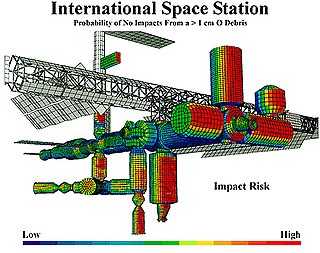
Back إدارة المخاطر Arabic সংশয় ব্যৱস্থাপনা Assamese Risk menecment Azerbaijani Управление на риска Bulgarian ঝুঁকি ব্যবস্থাপনা Bengali/Bangla Risk management Czech Risikostyring Danish Risikomanagement German Διαχείριση κινδύνου Greek Gestión de riesgos Spanish
This article needs additional citations for verification. (January 2014) |

Risk management is the identification, evaluation, and prioritization of risks,[1] followed by the minimization, monitoring, and control of the impact or probability of those risks occurring.[2] Risks can come from various sources (i.e, threats) including uncertainty in international markets, political instability, dangers of project failures (at any phase in design, development, production, or sustaining of life-cycles), legal liabilities, credit risk, accidents, natural causes and disasters, deliberate attack from an adversary, or events of uncertain or unpredictable root-cause.[3]
There are two types of events wiz. Risks and Opportunities. Negative events can be classified as risks while positive events are classified as opportunities. Risk management standards have been developed by various institutions, including the Project Management Institute, the National Institute of Standards and Technology, actuarial societies, and International Organization for Standardization.[4][5][6] Methods, definitions and goals vary widely according to whether the risk management method is in the context of project management, security, engineering, industrial processes, financial portfolios, actuarial assessments, or public health and safety. Certain risk management standards have been criticized for having no measurable improvement on risk, whereas the confidence in estimates and decisions seems to increase.[2]
Strategies to manage threats (uncertainties with negative consequences) typically include avoiding the threat, reducing the negative effect or probability of the threat, transferring all or part of the threat to another party, and even retaining some or all of the potential or actual consequences of a particular threat. The opposite of these strategies can be used to respond to opportunities (uncertain future states with benefits).[7]
As a professional role, a risk manager[8] will "oversee the organization's comprehensive insurance and risk management program, assessing and identifying risks that could impede the reputation, safety, security, or financial success of the organization", and then develop plans to minimize and / or mitigate any negative (financial) outcomes. Risk Analysts [9] support the technical side of the organization's risk management approach: once risk data has been compiled and evaluated, analysts share their findings with their managers, who use those insights to decide among possible solutions. See also Chief Risk Officer, internal audit, and Financial risk management § Corporate finance.
- ^ Cybellium. Risk Management Exam Review: A Comprehensive Guide to Excelling in Risk Management Exams. Cybellium. p. 3. ISBN 978-1-83679-348-9.
- ^ a b Hubbard, Douglas (2009). The Failure of Risk Management: Why It's Broken and How to Fix It. John Wiley & Sons. p. 46. ISBN 9781119522034.
- ^ Ata, Nabil Abu el; Schmandt, Rudolf (2016-05-17). The Tyranny of Uncertainty: A New Framework to Predict, Remediate and Monitor Risk. Springer. p. 7. ISBN 978-3-662-49104-1.
- ^ ISO 31073:2022 — Risk management — Vocabulary. Feb 2022. Retrieved 17 July 2024.
- ^ ISO 31000:2018 — Risk management — Guidelines. Feb 2018. Retrieved 17 July 2024.
- ^ ISO 31000:2018 – Risk management – A Practical Guide (1 ed.). ISO, UNIDO. 2021. ISBN 978-92-67-11233-6. Retrieved 17 December 2021.
- ^ Bhandari, Ashok (2021-10-27). 10X Execution: For Extra-ordinary Business Growth & Success. The PrintWorks. p. 310. ISBN 978-81-949109-2-3.
- ^ "Risk Manager" Society for Human Resource Management
- ^ "What Are Risk Analysts & Risk Managers?", CFA Institute